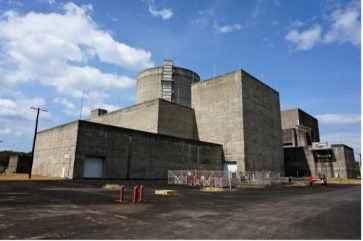
The US State Department said the Agreement for Cooperation in Peaceful Uses of Nuclear Energy with the Philippines had taken effect on 2 July. “The Agreement will enhance our cooperation on clean energy and energy security and strengthen our long-term bilateral diplomatic and economic relationships,” the State Department said.
Civil nuclear cooperation agreements, also known as 123 Agreements, provide the legal framework for export of nuclear material, equipment and components from the US to another country. It provides a comprehensive framework for peaceful nuclear cooperation with the Philippines based on mutual commitment to nuclear non-proliferation.
The 123 Agreement will permit the transfer of nuclear material, equipment (including reactors), components and information for nuclear research and civil nuclear energy production. The State Department said, it builds on the nearly 80 years of peaceful nuclear cooperation and establishes a framework for continued US civil nuclear trade with the Philippines.
“This Agreement is part of broader US efforts to develop the Philippines’ civil nuclear sector, creating a safe, secure and modern sector that requires a skilled workforce, robust regulations and strong commercial partnerships,” the State Department said. “Our government is committed to working with the Philippines to advance each of these areas and we look forward to further building our partnership together.
In a statement, Philippines Trade Secretary Alfredo Pascual said the Department of Trade& Industry (DTI) “sees the agreement as a key opportunity to attract investments in clean energy, bolstering our position as a prime investment destination”. He also described the deal as an important step in diversifying the country’s energy portfolio.
For the DTI, nuclear energy will not only enhance energy security, but will support economic growth as well, according to Pascual. “The DTI is dedicated to promoting sustainable industrialization and inclusive growth and we are optimistic about the positive impacts this collaboration will bring to our nation’s energy resilience and sustainability,” he said.
The Philippines and the US signed the agreement in November 2023. Negotiations for the 123 Agreement, which took about seven months, were led by Energy Undersecretary Sharon Garin for the Philippines and Principal Deputy Assistant Secretary of State Ann Ganzer for the US.
Energy Secretary Raphael Lotilla welcomed the entry into force of the Agreement. He said the agreement provides for the safe and secure use of nuclear energy for peaceful purposes, for information, knowledge and technology exchange related to nuclear safety, security, and non-proliferation. It aims to facilitate Philippine-US cooperation for the transfer of information, nuclear material, equipment and components.
“The Nuclear Energy Program-Inter-Agency Committee [NEP-IAC] is now finalising the country’s nuclear energy programme roadmap, which outlines key targets that must be achieved for the successful use of nuclear energy for power generation,” he said. Man Standard
US Embassy Commercial Counselor Paul Taylor said American companies are expected to ramp up commercial activities after the agreement entered into force. As many as 40 American companies are expected to venture into the Philippine nuclear space as the agreement takes effect. Taylor said this was the “perfect time” to “begin to shift gears to a much more commercial focus.”
“Now American companies can really get to ramp up much of their commercial activities,” Taylor told the US Embassy’s 16th Media Seminar entitled Powering Progress: The Path Toward the Philippines’ Clean Energy Transition. “Over the last couple of years, the work in the civil nuclear space energy sector was focused on the regulatory framework,” he said.
Work has ramped up with the creation by the US Embassy in May of the US Civil Nuclear Industry Working Group for Southeast Asia, bringing together American companies that are looking to bring their respective technologies to the Philippines.
Taylor said 14 firms that provide technology and services have joined the group that will facilitate the development of the civil nuclear sector in the country. He expected these 14 companies to expand to as many as 40.
The group will hold a virtual meeting on 31 July to move forward with nuclear-related investments in the country. “It’s really just an opportunity to sit around the virtual table and discuss how the United States and the Philippines can work from a commercial standpoint and how are we going to work more closely in this area,” Taylor said.
The US Embassy is closely working with the Philippines Department of Energy on various nuclear-related matters, including a supplier forum scheduled for mid-November this year. He said American companies were expected to attend the gathering “to take very concrete steps” to establish a supply chain necessary for pursuing civil nuclear energy development projects across the country.
Under the Philippine Energy Plan, Manila plans to produce 1,200 MWe using nuclear power by 2032, which would increase to 2,400 MWe by 2040 and to 4,800 MWe by 2050. The effort to revive nuclear power in the Philippines was begun by President Ferdinand Marcos Jr’s predecessor, Rodrigo Duterte, who was in power from 2016 to 2022 and whose relations with the US were somewhat strained.
However, in 2022, Washington and Manila signed a memorandum of understanding on civil nuclear cooperation that included reviving the mothballed Bataan Nuclear Power Plant, a 620 MWe pressurised light water reactor built by the US Westinghouse in 1976. Although the plant was completed it was almost immediately mothballed in the wake of the 1986 Chernobyl disaster after questions were raised about its excessive cost and poor safety, including its location near a major fault and the Pinatubo volcano.






